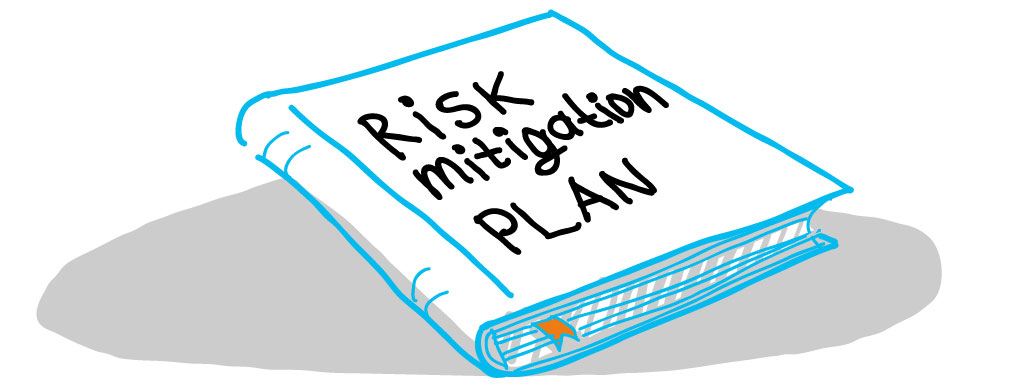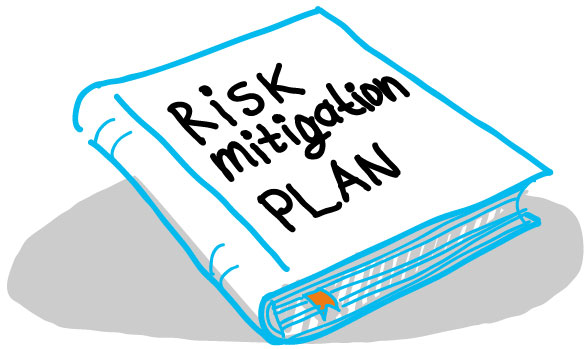What is Risk Mitigation?
To define risk mitigation, let us first specify what risk is. “Risk” is the possibility of loss. Thus, risk mitigation entails a concentrated effort to reduce adverse effects. There business world is full of risks, and when it comes to potential endeavors and practices that could potentially benefit a business, one must be able to develop a risk mitigation plan that results in the best potential outcome for the company. Thus, a more practical risk mitigation definition would be the minimization of risk in proportion to the potential payoff.
Request a risk management solution


There are four general types of risk mitigation strategies – acceptance, avoidance, limitation, and transference. Let’s discuss some risk mitigation examples. Suppose you are very protective of particular secret technology you have developed for your long-range forest fire detection company that is instrumental in your business’ success, since, as everyone knows, companies like to adopt good ideas and benefit from them themselves. At the same time, you have to relay information to your employees watching these cameras at remote locations and sometimes they need to use this technology for error correction. In this case, you could accept the risk (the first strategy) of relaying information to them remotely if you view the risk as low or unlikely enough to cause adverse consequences for you. In this case, avoidance – the second strategy, would entail completely avoiding the risk; however, your risk evaluation and mitigation strategy would likely suggest doing otherwise, as this risk will likely prove more costly than just taking it on. You could choose to only communicate valuable information remotely when absolutely necessary, as the third strategy. Or, you might simply pay to “transfer” the service to a separate employee or friend to arrive and adjust the cameras on site to avoid both the need to travel there and relay your information through your network.
However, it is impossible to explain risk mitigation without considering the opportunity. Would you share your business ideas with other people in your industry to get their advice before you have a patent? Perhaps only with businessmen who are not involved in the field, limiting the risk of your ideas getting stolen. Would it be better to invest in developing a new line of business or instead refer your clients who are interested in that product line to a partner? Much of the time, risk and mitigation will favor the latter. Can you afford to perform risk mitigation without business interruption?
Risk mitigation meaning relies on the overall result of your approach to a decision. And risk is unavoidable. At the same time, there is no benefit in providing employees access to information that isn’t necessary for them to know to do their job. The same applies to the access they have to sensitive documents and resources. Also, it goes without saying that strict procedure and preparation of employees for proper conduct go a long way. However, in many situations, risk assessment and mitigation might not be so cut and dry. To prepare your company for pitfalls, and to identify weaknesses in security and costs that you might know exists, you may consider a using a system to identify those weaknesses. An economic formula for calculating your benefit versus your opportunity cost will in the long run assist you in making the decisions with the highest statistical chance of paying off.
SearchInform uses four types of cookies as described below. You can decide which categories of cookies you wish to accept to improve your experience on our website. To learn more about the cookies we use on our site, please read our Cookie Policy.
Necessary Cookies
Always active. These cookies are essential to our website working effectively.
Cookies does not collect personal information. You can disable the cookie files
record
on the Internet Settings tab in your browser.
Functional Cookies
These cookies allow SearchInform to provide enhanced functionality and personalization, such as remembering the language you choose to interact with the website.
Performance Cookies
These cookies enable SearchInform to understand what information is the most valuable to you, so we can improve our services and website.
Third-party Cookies
These cookies are created by other resources to allow our website to embed content from other websites, for example, images, ads, and text.
Please enable Functional Cookies
You have disabled the Functional Cookies.
To complete the form and get in touch with us, you need to enable Functional Cookies.
Otherwise the form cannot be sent to us.

Subscribe to our newsletter and receive a bright and useful tutorial Explaining Information Security in 4 steps!

Subscribe to our newsletter and receive case studies in comics!